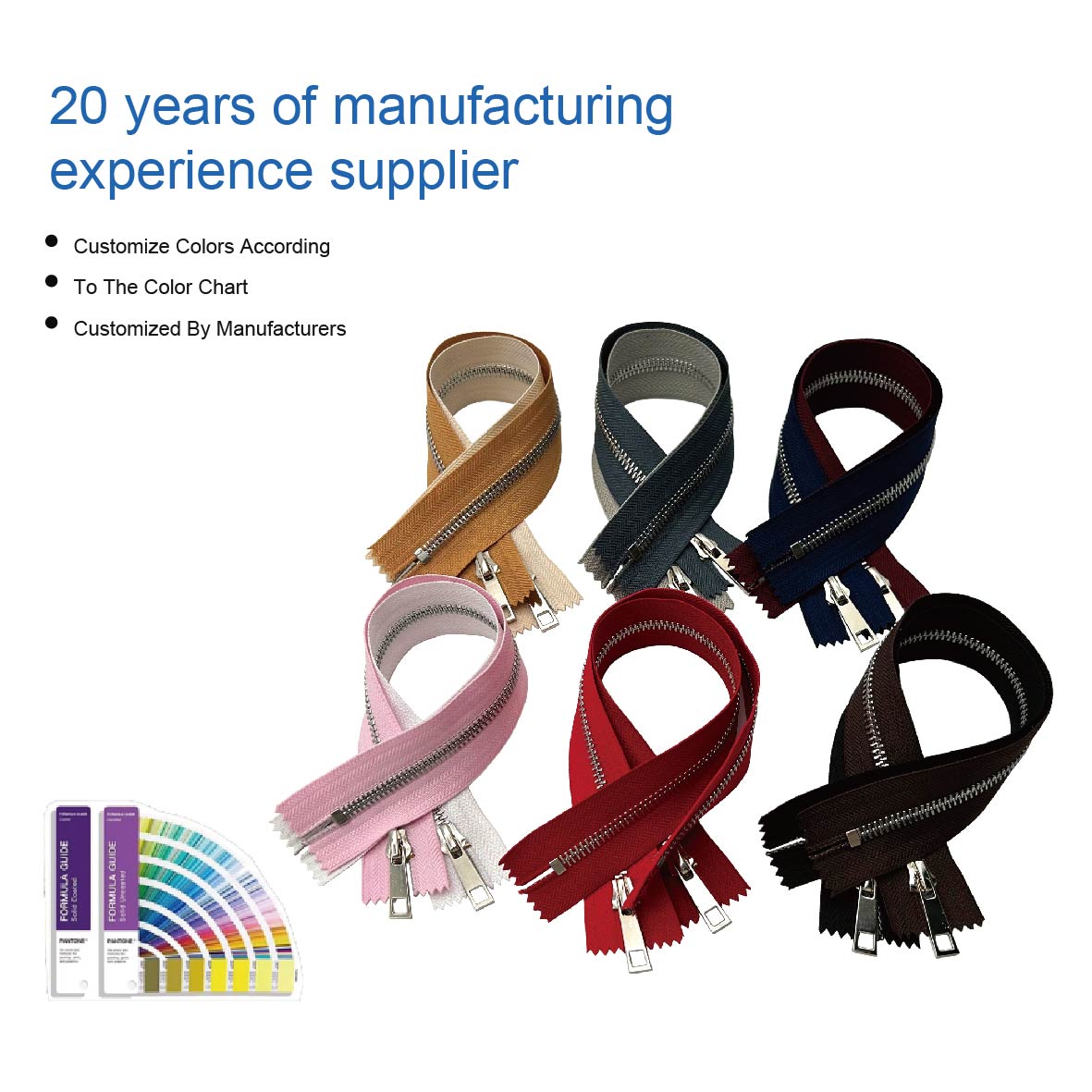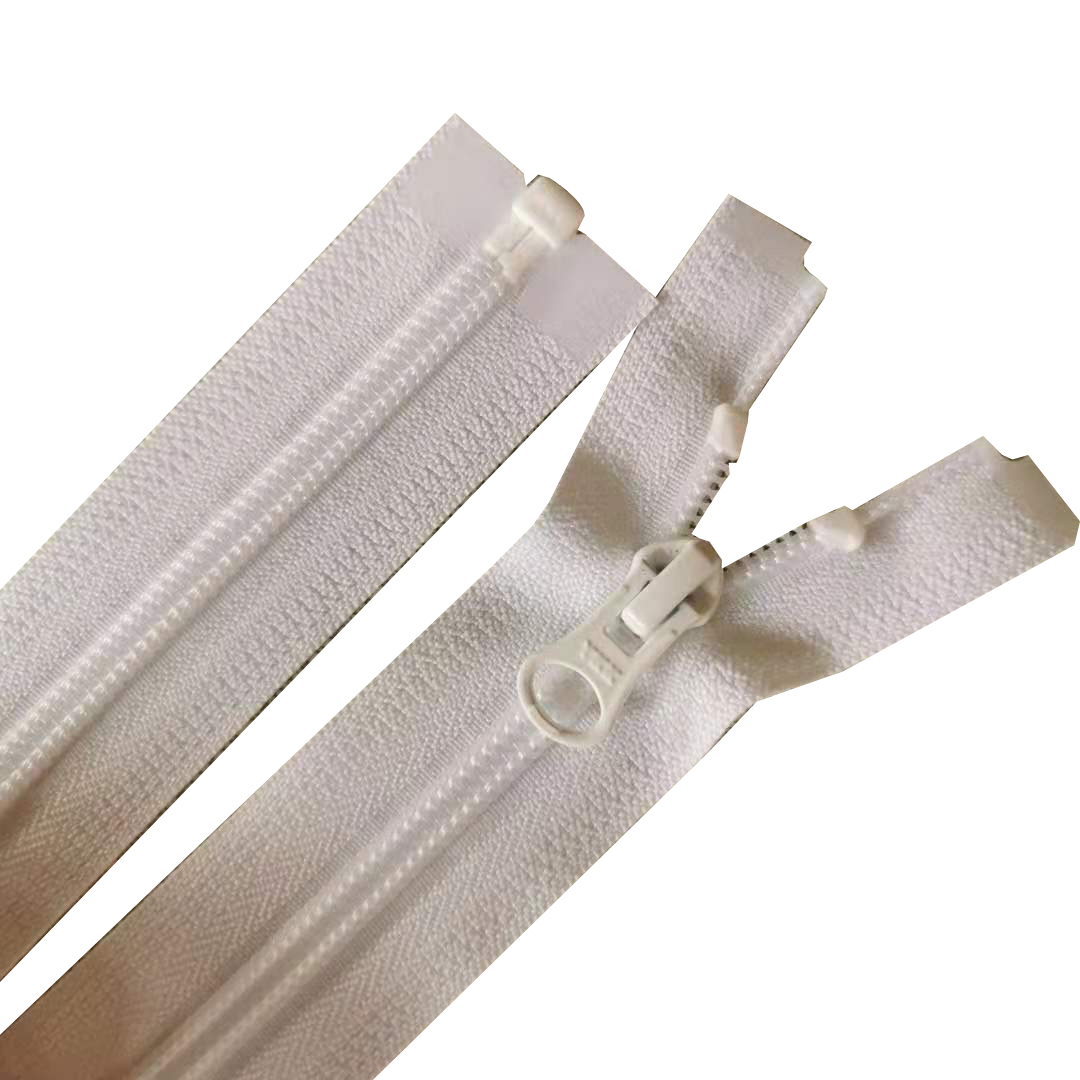Bag Zipper Manufaturing Solution
Update time:2025.04.16 Views:740
Manufacturing process and technical analysis of handbag zipper
In the modern luggage manufacturing industry, zippers are a key accessory, and their quality directly affects the product's service life and user experience. The manufacturing process of handbag zippers integrates material science, precision machinery, and automation technology to form a complete production system. This article will provide a detailed introduction to the manufacturing process and key technical points of handbag zippers.
1、 Raw material selection and pretreatment
The manufacturing of handbag zippers begins with strict raw material selection. Metal components are mainly made of zinc alloy (ZnAl4Cu1) or copper nickel alloy (CuNi18Zn20), which have good mechanical properties and corrosion resistance. Polymer materials are selected from PA66 or POM engineering plastic particles, with a particle size controlled within the range of 1.5-2.5mm. The ribbon material is made of 600D high-density polyester cloth tape, and has undergone special treatments such as waterproofing and UV protection. All raw materials must undergo strict composition analysis and physical performance testing before being stored to ensure compliance with production standards.
2、 Precision manufacturing process flow
The manufacturing of metal zipper teeth adopts a 200 ton precision die-casting machine, and the mold temperature is strictly controlled within the range of 180 ± 5 ℃. The zipper teeth formed by die-casting need to undergo surface nickel plating treatment, with a coating thickness of 8-12 μ m. The production of resin zipper teeth uses an 80 ton injection molding machine, with a melt temperature set between 220-240 ℃, injection pressure maintained at 80-100MPa, and cooling time controlled at 15-20 seconds. Each production batch must undergo dimensional accuracy testing to ensure that the tolerance is within ± 0.05mm.
3、 Automated assembly and quality control
In the assembly process, ultrasonic welding technology is used to fix the zipper teeth on the webbing, with a welding frequency set at 20kHz and a welding speed controlled at 3-5 meters per minute. The assembly of the pull head is completed by a fully automated production line, and each pull head must undergo spring pressure testing (0.5-0.8N) and opening and closing smoothness testing (sliding resistance ≤ 2N). The quality inspection system includes physical performance testing (transverse tensile force ≥ 80N), durability testing (opening and closing times ≥ 10000 times), and environmental adaptability testing (temperature cycling from -20 ℃ to 60 ℃).
In the modern luggage manufacturing industry, zippers are a key accessory, and their quality directly affects the product's service life and user experience. The manufacturing process of handbag zippers integrates material science, precision machinery, and automation technology to form a complete production system. This article will provide a detailed introduction to the manufacturing process and key technical points of handbag zippers.
1、 Raw material selection and pretreatment
The manufacturing of handbag zippers begins with strict raw material selection. Metal components are mainly made of zinc alloy (ZnAl4Cu1) or copper nickel alloy (CuNi18Zn20), which have good mechanical properties and corrosion resistance. Polymer materials are selected from PA66 or POM engineering plastic particles, with a particle size controlled within the range of 1.5-2.5mm. The ribbon material is made of 600D high-density polyester cloth tape, and has undergone special treatments such as waterproofing and UV protection. All raw materials must undergo strict composition analysis and physical performance testing before being stored to ensure compliance with production standards.
2、 Precision manufacturing process flow
The manufacturing of metal zipper teeth adopts a 200 ton precision die-casting machine, and the mold temperature is strictly controlled within the range of 180 ± 5 ℃. The zipper teeth formed by die-casting need to undergo surface nickel plating treatment, with a coating thickness of 8-12 μ m. The production of resin zipper teeth uses an 80 ton injection molding machine, with a melt temperature set between 220-240 ℃, injection pressure maintained at 80-100MPa, and cooling time controlled at 15-20 seconds. Each production batch must undergo dimensional accuracy testing to ensure that the tolerance is within ± 0.05mm.
3、 Automated assembly and quality control
In the assembly process, ultrasonic welding technology is used to fix the zipper teeth on the webbing, with a welding frequency set at 20kHz and a welding speed controlled at 3-5 meters per minute. The assembly of the pull head is completed by a fully automated production line, and each pull head must undergo spring pressure testing (0.5-0.8N) and opening and closing smoothness testing (sliding resistance ≤ 2N). The quality inspection system includes physical performance testing (transverse tensile force ≥ 80N), durability testing (opening and closing times ≥ 10000 times), and environmental adaptability testing (temperature cycling from -20 ℃ to 60 ℃).
The manufacturing of handbag zippers reflects the precision and automation characteristics of modern manufacturing industry. Through strict material selection, precise machining processes, and a comprehensive quality control system, the reliability and durability of zipper products are ensured. With the continuous development of new materials and processes, the manufacturing technology of handbag zippers will continue to advance, providing higher quality accessory solutions for luggage products.



